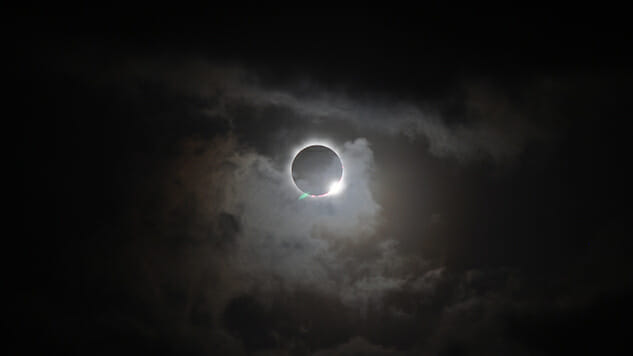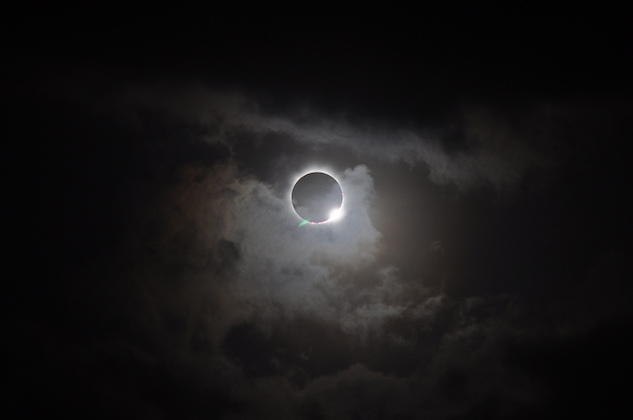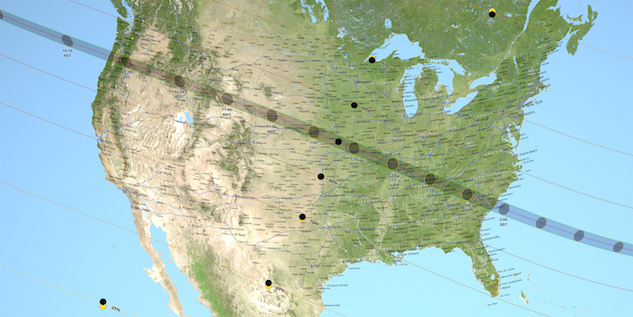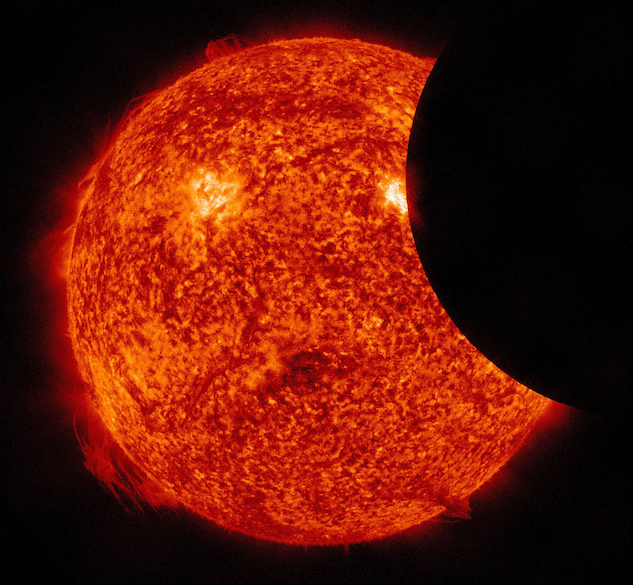
Space Matter is a weekly column that delves into space science and the mechanics of spaceflight. From the latest discoveries in the universe around us to the fits and starts of rocket test flights, you’ll find analysis, discussion, and an eternal optimism about space and launching ourselves into the cosmos.
![]()
If you follow space/astronomy news at all, you’ve likely heard about the 2017 eclipse. Or perhaps this is the first you’re hearing about it. Either way, it’s an event that you need to be aware of. If you leave within or near the total eclipse path, you have a duty (as a person of Earth) to try and see it. So, what do you need to know, and why are people making such a big deal about it?
Let’s start with the whats: On August 21, 2017, there will be a total solar eclipse (meaning the sun will be fully obscured by the moon’s disc, as opposed to a partial eclipse) visible across the entire contiguous United States. The last total solar eclipse to be visible from the contiguous 48 states occurred in 1979.
The total eclipse will pass over the main body of the United States in a 70-mile-wide arc, sweeping from Oregon across the country to South Carolina. This means that regardless of where you live on the coasts or in between, you could have an opportunity to see this historic event.
An eclipse occurs when the body of the moon travels between the sun and the earth, and the moon casts a shadow upon the Earth. There are different kinds of eclipses; a total eclipse is what happens when the sun is fully obscured by the moon. The moon’s shadow casts a penumbra, umbra, and antumbra on the Earth. The umbra, or the darkest, innermost part of the shadow, is where the total eclipse occurs.
 Photo courtesy of NASA/Goddard
Photo courtesy of NASA/Goddard
But wait, you might be asking. The sun and the moon are very different sizes. How can the moon fully obscure the sun? This is one of those amazing things about our universe: the ratios of sizes and distances between the sun and our moon. Because the sun is approximately 400 times the distance from the Earth as the moon is from the Earth, and the moon’s diameter is about 400 times smaller than the sun’s, they appear about the same size in our sky. Therefore the moon can fully eclipse the sun as seen from the Earth.
But why do you want to see a total eclipse? I personally have never witnessed one, but anyone I’ve talked to who’s had the fortune has deemed the experience as “life-changing.” You can read more about the people who chase totality in Tyler Nordgren’s Sun Moon Earth, a history of solar eclipses, but the bottom line is that people pay exorbitant amounts of money and spend countless hours, weeks, and months chasing the very thing that might just be in your backyard in 2017.
 Photo courtesy of NASA/Goddard/SVS/Ernie Wright
Photo courtesy of NASA/Goddard/SVS/Ernie Wright
Now it’s important to note that everyone in the continental United States will see an eclipse on August 21, assuming skies are clear wherever you are. The moon will cover, at minimum, about half the sun’s surface. But within a certain zone (the afore-mentioned path from Oregon to South Carolina), you will see totality; the moon’s shadow will appear larger than the sun, and thus block out the glowing orb, making the sun’s corona visible to the naked eye. Trust me, you want to be in this path; it may sound glamorous, the moon’s shadow blocking half the sun, but it’s not. You probably won’t even notice it as you’re going about your daily life. There is no prize for second place in this case; if you want to see the eclipse, you’re going to have to get yourself into the zone of totality. (And make plans you should, because hotels are already filling up for the event.)
 Photo courtesy of “NASA/ESFC/SDO:ttp://tinyurl.com/j7k3m2u
Photo courtesy of “NASA/ESFC/SDO:ttp://tinyurl.com/j7k3m2u
During the 2017 eclipse, you’ll have to watch the initial stages of the eclipse through a solar filter because, as any young child knows, you can’t look directly at the sun. (You can buy special eclipse glasses “online The moon will start to cover the sun. If you’re looking at shadows on the ground (shadows of tree branches/leaves make an excellent natural solar filter), you’ll see them growing more defined as you approach totality.
When totality hits, the sun is fully obscured by the moon, and it’s safe to look up. For up to two minutes, you’ll experience wonders. The temperatures will drop noticeably. Birds will go quiet. You’ll see the brilliant corona surrounding the sun, invisible to the eye during daylight. You’ll see the stars come out in the middle of a summer day. You don’t need any special tools to witness this part of the eclipse; it’s gloriously visible to the naked eye.
And then, as quickly as it began, it will be over. The second the sun peeks out from behind the moon, you’ll need to look away to prevent damage to your eyes. On the (likely very long and traffic-filled) drive back to wherever you came from, you can contemplate what you just saw and make plans for the next eclipse: Texas to Maine, on April 8, 2024.
Top photo courtesy of NASA/Goddard
Swapna Krishna is a freelance writer, editor, and giant space/sci-fi geek.